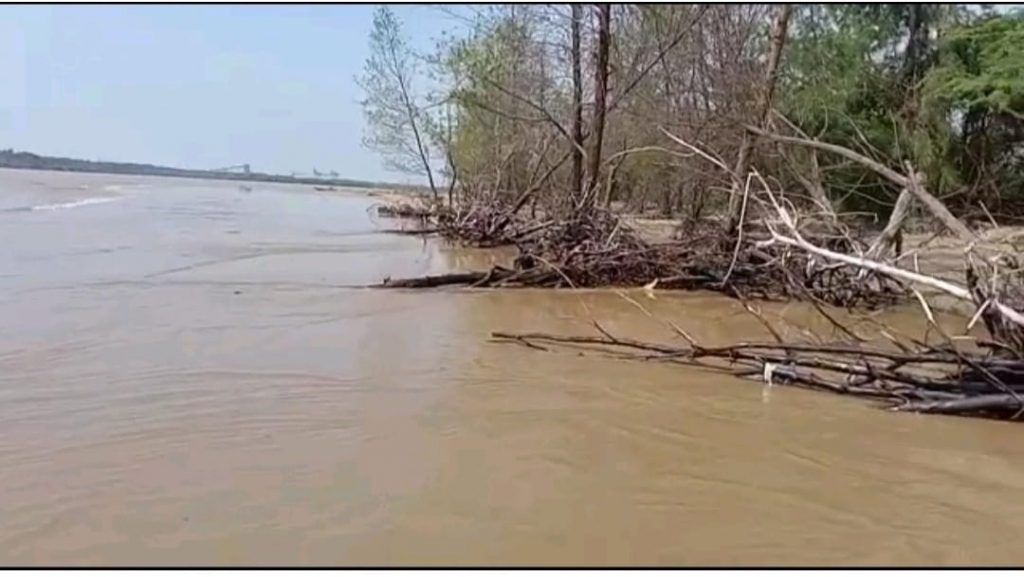Mahakalapara: The vast expanse of sandy beach at Gahirmatha marine sanctuary under this block in Kendrapara district is the largest rookery or mass nesting ground in the world for the rare Olive Ridley turtles followed by the coasts of Mexico and Costa Rica.
However, rising tidal waves and rapid sea erosion have pushed the Gahirmatha marine sanctuary to the verge of extinction. Gahirmatha marine sanctuary is located in close vicinity of Bhitarkanika National Park in the coastal district. The sanctuary is spread on over 1,420 sq km area from Brahmani river mouth in the south to Dhamra sea mouth in the north and 20 nautical miles into the sea. The marine sanctuary blessed with nature’s bounty is now under threat from the rising sea waves. The rising sea waves have eaten into major portions of the marine sanctuary.
Among them, the three-km-long sand bar in Agarnasi island and the casuarina forests, which act as a buffer zone for the sanctuary, are the worst affected. As a result the sea waves are now directly hitting the mangrove forests at Jambu, Tanda, and Kandarapatia eating away large chunks of land day by day. The large sand bar and casuarina forests in Madali, Lunchghola islands are no exception as those are also bearing the brunt of sea erosion. It is apprehended that the day is not far when islands like Madali and Lunchghola, popular among the tourists and adventure enthusiasts, will lose their existence. Environmentalists fear that the rate at which the sea waves are rising, they will soon erode the sea beach completely. Environmentalists Subhash Chandra Swain and Samarendra Mahali said a new sea mouth has formed near Madali island (the place where a large cargo ship had capsized) after the Super Cyclone-1999 due to which large tidal waves are striking straight against the crucial beach. This has been washing away the coast for long and large portions of the beach have been lost to the sea. The large sand beds of Tanda, Lunchghola, Madali, Agarnasi, Hukitola and Sholamuhan islands on Gahirmatha provide space for safe mass nesting of the Olive Ridley turtles. A few years back, large number of turtles used to mate and lay eggs on these nesting sites of Gahirmatha. However, with the beach getting washed away, the turtles have changed their nesting sites. Now, fewer turtles lay eggs at these locations.
On the other hand, large casuarinas and saline mangrove forests provide a safe haven for various indigenous and migratory varieties of birds and marine creatures like dolphin, horseshoe crabs, red crabs, harley crabs and others. These forests are home to animals like deer, wild boar, barking deer, hyena, water monitor lizard, wild cat, wild buffalo and wild dog while fishermen too use this place in order to fish in the sea. When contacted, Rajnagar DFO Sudarshan Gopinath Yadav said the water level has increased in the sea while resultant high tidal waves are eroding the coast proving to be a cause of concern. However, the Forest department is keeping close watch on the development.
